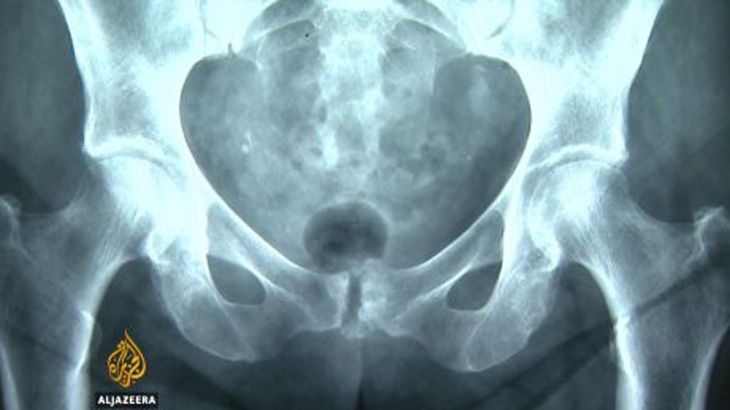Ireland’s compensation for symphysiotomy victims ending
Legal experts condemn compensation scheme for women who were crippled by Irish doctors during childbirth.

In the 20th century, symphysiotomy was practised only in Ireland.
Doctors across Europe knew what a caesarean section was, but the wards were also staffed by Catholic nuns.
Keep reading
list of 4 itemsWoman, seeking loan, wheels corpse into Brazilian bank
UK set to ban tobacco sales for a ‘smoke-free’ generation. Will it work?
Poland lawmakers take steps towards liberalising abortion laws
It is widely suspected that, on the advice of the Church rather than best medical practice, doctors chose not to carry out c-sections over fears they would limit the number of babies women could have to two or three.
Instead, they would saw open their cartilage and pelvic bones to widen their birth canal. Symphysiotomy means the cutting of the joint of the pelvis, leading to its separation.
|
|
This allowed women to have nine or 10 babies, in line with Catholic orthodoxy, but it also often rendered them unable to walk or have sex. It often left them in chronic pain and made them either singularly or doubly incontinent, often for years afterwards.
Symphysiotomy has been compared to female genital mutilation and a form of torture. Its practice has been decried by the United Nations, Irish Council for Civil Liberties, and other human rights groups.
The only body that hasn’t called for a full investigation and search for justice for the perpetrators has been the Irish government. In fact, its compensation scheme achieved the opposite.
It demanded that women, in return for receiving funds, signed a waiver agreeing they would take no legal action against doctors, hospitals, religious orders, government ministers or the state itself.
In return, women could expect to receive the equivalent of $54,000 for proof of an operation, double that if they could prove significant disability, and three times the amount in cases of exceptional suffering. (For most, the second and third categories were impossible to prove thanks to poor record-keeping by doctors.)
Now, the scheme is drawing to a close. The majority of the women received the lowest payout, usually accompanied by a letter from the administrator of the scheme advising them to “spoil themselves” with the proceeds.
As well as that, women whose children were injured in childbirth were offered nothing for their suffering.
The woman we interviewed gave birth to a boy with a brain injury resulting in cerebral palsy, apparently brought on by the decision of doctors not to perform a c-section but to wait and then perform a symphysiotomy after failing to deliver the baby by forceps.
Another woman previously interviewed had the bone version of symphysiotomy, pubiotomy, performed on her. In a subsequent labour, her baby’s head became impaled on her detached pelvic bone and died.
Such horrific stories are entirely common. But the compensation scheme specifically excludes injuries to babies.
The judge administrating the claims has always refused an interview. Her office said in a recent email that she found our coverage of the scheme lacking in objectivity.
What few public remarks have been made suggest the government believes the scheme is the best and fairest way of dealing with elderly women.
Yet it is accurate to say that the payment schedule offers no comparison with any other physical injury compensation scheme in Ireland.
|
|
A so-called “Book of Quantum” exists in lawyers’ offices. It dates to 2004.
Even back then, if you fell over a cable in the road and permanently damaged a knee or an ankle, you would easily get $70,000 or $80,000, as well as compensation for lost earnings. In 2016, the payouts would be higher still.
In other words, people who suffer accidents and are badly injured are likely to receive far more compensation than any of the symphysiotomy victims received for being deliberately sawn open by doctors in hospitals overseen by the Irish government.
One woman went to the High Court in Dublin before the scheme began, and ended up with more than $300,000. That is more than six times the baseline government offer.
By way of comparison, we asked a leading birth injury claims lawyer in London how much a symphysiotomy victim might receive in the UK.
Sanja Strkljevic pointed out that compensation claims in England and Wales are traditionally lower than in Ireland, but a woman who suffered a terrible injury during birth – which led to her becoming incontinent – would be able to claim far more than the amount offered in Ireland.
If the woman’s child was also injured because of negligence, then he or she would be entitled to a separate claim for long term medical and other support – a claim that could easily amount to hundreds of thousands of pounds.
So the question must be asked: Why is Ireland’s compensation offer so low?
One theory is when the scheme began, Ireland was in the middle of a massive austerity programme brought on by the banking crisis.
Others believe the intention of the low offer was to imply the suffering of the women was not particularly severe, to protect vested interests in the Catholic Church and medical establishment.
The judge overseeing the claims has said she is minded to shred the women’s medical records at the closing of the scheme, unless women say they want them returned. Many of the victims and their families see this as a clear indication that the state wants to bury the entire affair.
The United Nations Human Rights Committee has already classed symphysiotomy as a form of torture, cruel, inhuman or degrading treatment.
It will soon deliver another report on Ireland’s human rights record. It is eagerly awaited by campaigners for the women.